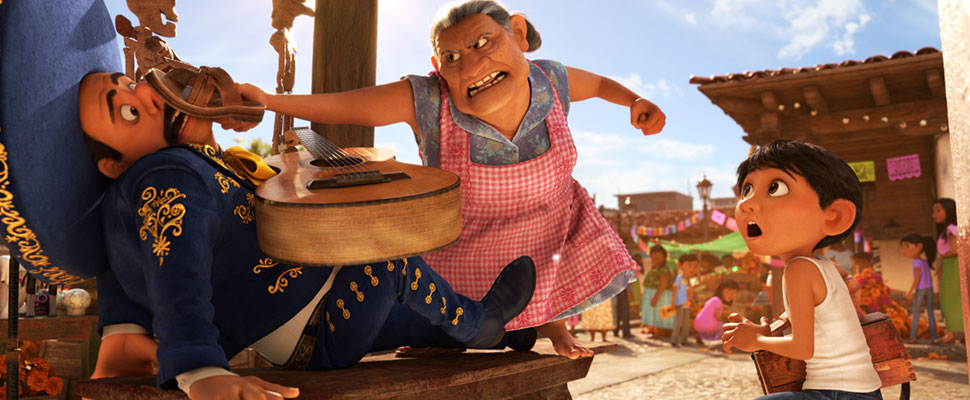This is how the racist landscape of Latin characters in animated films has changed
Has Disney really advanced in terms of representing Latino characters?

The magazine Deadline published a few days ago a statement of a project that would be carried out in the Disney studios. It is a new real-action film that will be "based on an original idea by Ola Shokunbi and Lindsey Reed" and will feature a young African girl named Sadé. According to the media, this will be the first film with an African character in the main role. This project is a great step by the giant of animation in terms of representation of minorities, as there are more and more people of different races and cultures with leading roles.
Leer en español. Así ha cambiado el panorama racista de los personajes latinos en las películas animadas
The problem is that often these films end up portraying stereotypes and not the reality of the race they are characterizing. A clear example of this is The Princess and the Frog, an animated film that gave life to Disney's first black princess. "The argument is that any representation of a black princess is refreshing and progressive in terms of reflecting cultural values and ideologies. However, some critics argue that Princess Tiana is, in fact, a misrepresentation of black women and black culture," says an article in the Women's Resource Center at the University of Colorado. Of course, that is something that has been changing over time.
How are we going to represent Latino characters?
It is evident that there is more and more Latin representation in movies and even animated series. Elena de Ávalor and Coco are the clear examples of this and the most recent. On the one hand, Elena de Ávalor is a series that tells the story of a young woman who "is not indigenous or Afro-Latino or a specific Latin American country." According to the poet Melissa Lozada-Oliva in an article for The Guardian, "she is a thin and light brown Latin princess of Ávalor, a kingdom shaped by a Latin American style that exists in a precolonial, pre-Columbian world. This, by the way, is disconcerting: How can you understand your Latino identity without recognizing colonialism?."
Actually, Elena could be considered an interpretation of Latin American society itself, which is neither here nor there. A current society that is the result of miscegenation.
It may interest you: Who said that animation is only for children?
On the other hand, Coco is a representation of Mexican culture and the popular Day of the Dead celebration, according to the New York Daily News. "It comes after Disney's Moana, a computer-animated film with a girl from a Polynesian town, which got the most positive reaction from the Polynesian audience in 2016. Both Coco and Moana used consultants to make sure the movies they were culturally sensitive," explains the newspaper. This is a film that successfully portrays the essence of Mexico, its people, its traditions, its beliefs and its indigenous heritage.
Nowadays something very special is happening in Disney in terms of representation of that Latin culture. However, this has not been the case since "Disney productions have not always received praise for their interpretation of ethnic minorities. In fact, some popular films have been attacked for reinforcing stereotypes or simply for being racist," explains the New York Daily News. In the history of this great company, many of its films have been characterized by precisely reinforcing the stereotypes that exist around Latin American culture.
An example of this is Tito, a character in the movie Oliver and his gang. According to The Huffington Post, Tito is a chihuahua with a Chicano accent, "hot blood" and very emotional. There is also Panchito Pistoles, "the bird crazy about weapons whose misspelled name means "Panchito Pistolas", wears a hat and speaks with a strong accent".
However, every year Disney is producing films that portray this population in a much more real and human way, with increasingly important roles. We no longer see as before stereotypes of Latino characters that only sought to be fun, and which could be offensive to some people.
LatinAmerican Post | Diana Rojas Leal
Translated from 'Así ha cambiado el panorama racista de los personajes latinos en las películas animadas'





